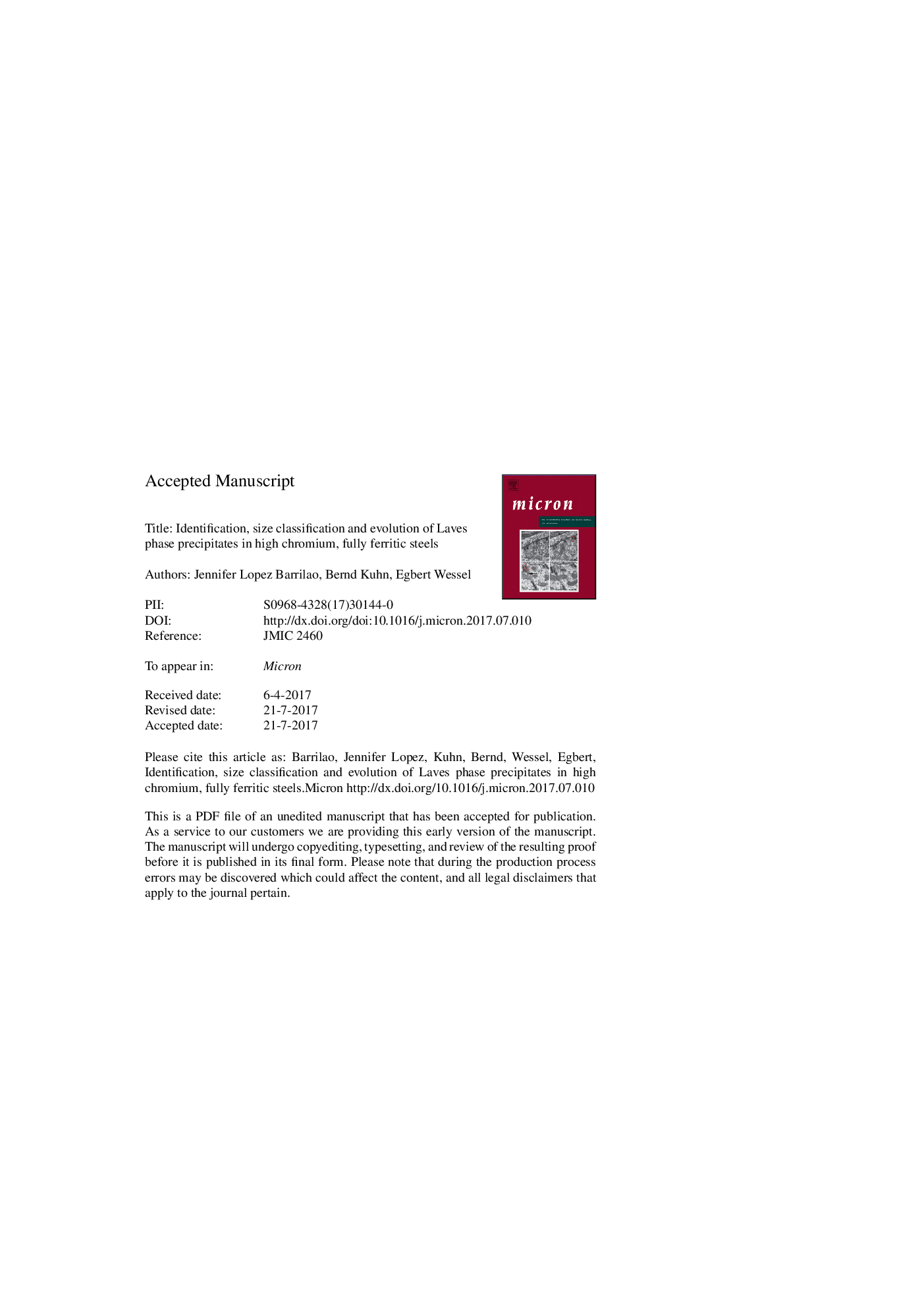| Article ID | Journal | Published Year | Pages | File Type |
|---|---|---|---|---|
| 5456965 | Micron | 2017 | 18 Pages |
Abstract
To fulfil the new challenges of the German “Energiewende” more efficient, sustainable, flexible and cost-effective energy technologies are strongly needed. For a reduction of consumed primary resources higher efficiency steam cycles with increased operating parameters, pressure and temperature, are mandatory. Therefore advanced materials are needed. The present study focuses on a new concept of high chromium, fully ferritic steels. These steels, originally designed for solid oxide fuel cell applications, provide favourable steam oxidation resistance, creep and thermomechanical fatigue behaviour in comparison to conventional ferritic-martensitic steels. The strength of this type of steel is achieved by a combination of solid-solution hardening and precipitation strengthening by intermetallic Laves phase particles. The effect of alloy composition on particle composition was measured by energy dispersive X-ray spectroscopy and partly verified by thermodynamic modelling results. Generally the Laves phase particles demonstrated high thermodynamic stability during long-term annealing up to 40,000 h at 600 °C. Variations in chemical alloy composition influence Laves phase particle formation and consequently lead to significant changes in creep behaviour. For this reason particle size distribution evolution was analysed in detail and associated with the creep performance of several trial alloys.
Related Topics
Physical Sciences and Engineering
Materials Science
Materials Science (General)
Authors
Jennifer Lopez Barrilao, Bernd Kuhn, Egbert Wessel,
